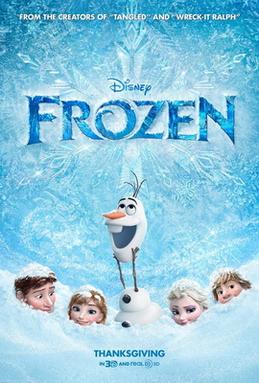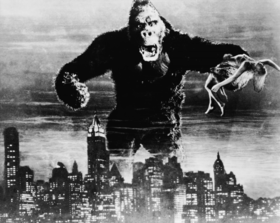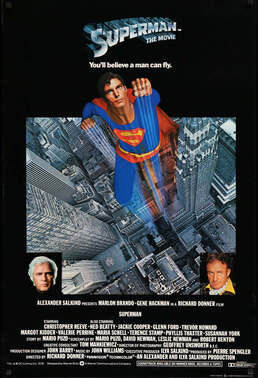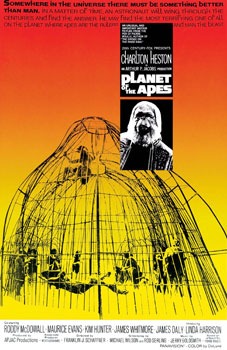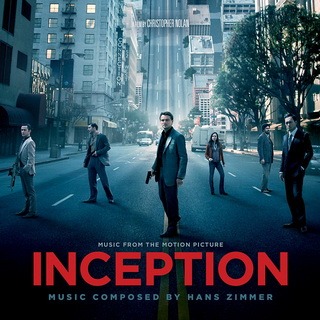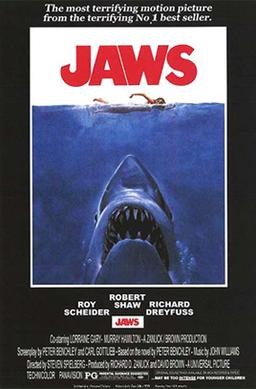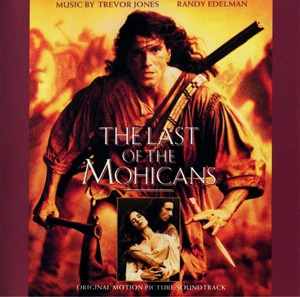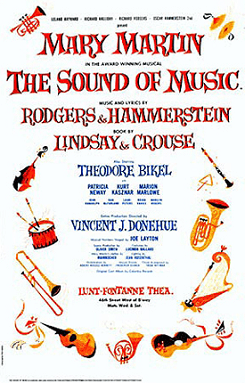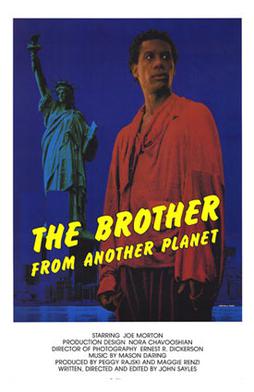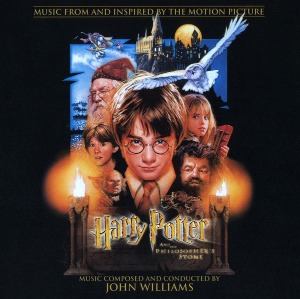The entrancing craft of film scoring is responsible for much of the charm in the movie industry, from the haunting tunes that chill you to the heart-pounding crescendos that arouse your emotions. The soundtracks of movies have the amazing power to live beyond the screen and linger forever in our memories and feelings. We will commemorate the musical masterpieces that have raised narrative to new heights and permanently altered our perception of the silver screen as we set off on a melodic trip through the history of film. Come explore the fascinating realm of cinematic soundscapes, where music plays a crucial role in the unfolding narrative of a film.
Frozen – Christophe Beck
Disney animation returns to its pinnacle with Frozen. The previous feature films starring the Muppets had music by Christophe Beck, whose tender compositions nicely matched the songs of Kristen Anderson-Lopez and Robert Lopez.
Interstellar – Hans Zimmer
Zimmer did a fantastic job on Interstellar, earning a nomination for an Oscar for his music. Zimmer visited London’s Temple Church to capture the ancient organ for his two-year-long labor of love. Later, a 60-voice mixed choir, an ensemble of 34 strings, 24 woodwinds, and four keyboards, was added. The melody is permeated with the sensation of air and breath.
King Kong by Max Steiner (1933)
Max Steiner, an Austrian-born composer who is sometimes referred to as the “father of film music,” immigrated to Hollywood in 1929 and was one of the first to create narrative music for films in a fashion that is still used today. The Searchers and Casablanca are two of his numerous well-received film scores; the most well-known being Gone With the Wind.
For RKO’s spectacular King Kong, a movie that seemed to be ahead of its time in terms of its visual effects, he composed one of his early unique compositions. Steiner was able to exercise his skills and demonstrate the potential of a completely synchronized dramatic score thanks to the epic exploits on the big screen. The end product was certainly eye-opening, as Steiner unleashed a barrage of brass, percussion, and thrilling/soaring strings to convey the overwhelming enormity of the huge Ape, the enigmatic, foggy Skull Island, and the most improbable of love tales.
Gone With the Wind by Max Steiner (1939)
When the film was released, Steiner’s most well-known composition—which took him just three months to complete—was the longest film score ever, clocking in at about three hours. Five orchestrators assisted in the production of the score, and Steiner occasionally put in up to 20 hours a day at work.
Each character was given a unique musical theme, with Tara’s Theme—which symbolizes the Georgia plantation—being the most well-known. The motif exudes a deep romanticism. It is utilized in a pivotal sequence where Scarlett (Vivien Leigh) and her father may be seen in silhouettes against a menacing sunset.
Steiner was nominated for an Oscar for the score but didn’t win one despite the movie winning eleven awards. Herbert Stothart, the composer of The Wizard of Oz, defeated him.
Monty Norman’s “James Bond Theme”
Since Dr. No (1962), the most well-known guitar riff in history has opened every official Bond film. It first appeared in the opening title sequence. From Russia with Love’s opening titles, it reappeared, and from that point on, it was as much a part of the James Bond world as gadgets and clichéd one-liners. Vic Flick played the guitar riff heard in the original recording of the theme. Vic Flick received a one-time payment of £6 for recording the song.
Henry V by William Walton (1944)
Actor Laurence Olivier and composer William Walton collaborated on several Shakespearean films, such as Hamlet and Richard III. One of their best-known collaborations is the Technicolor film Henry V, which was commissioned by the Ministry of Information to aid in the war effort. The film’s score was nominated for an Oscar.
The moving movie progressively takes viewers from the Globe Theatre’s walls outside to the battlefields of the Battle of Agincourt, where Henry (Olivier) prevails. The unique modal harmonies, drumming, and brass fanfares all contribute to the score’s strong period sense. Walton even borrowed a theme for Katharine, the French princess, from folk tunes from the Auvergne. Walton informed Olivier that without the music, the movie would have been “terribly dull.”
Superman – John Williams
Since Christopher Reeve’s Superman originally appeared on screen in 1978, the film and the visual effects may have become old. But not the music. If anything, it has developed and become recognizable, due to Williams’s talent at encapsulating the mood of the film in his music. John Williams is in full force here, giving us the impression that a man could fly with this opulent, brassy Star Wars fanfare.
Dario Marianelli’s Pride and Prejudice
Marianelli began composing a soundtrack that sounds as though it might have been heard by any of Jane Austen’s characters by drawing inspiration from Beethoven’s piano sonatas. Marianelli was in the unusual situation of really needing to have music ready long in advance of the film’s completion, as many sequences include individuals playing pianos.
The 1960 film Psycho by Bernard Herrmann
By killing off the main character midway through, Alfred Hitchcock’s suspense thriller Psycho (1960) flipped narrative convention on its head. The memorable high-pitched string stabs accompany the infamous shower murder, in which serial murderer Norman Bates (Anthony Perkins), disguised as his mother, stabs his victim Marion Crane (Janet Leigh).
Despite the director’s original demands for the sequence to be silent, composer Bernard Herrmann persisted and created this music. Herrmann was certain that the whole music would include just strings because he believed that they would accentuate the bleakness of Hitchcock’s black-and-white images.
1962’s Lawrence of Arabia by Maurice Jarre
With his soundtrack for David Lean’s epic picture Lawrence of Arabia (1962), which told the tale of an Englishman who assisted the Arabs in their struggle against the Ottoman Empire during World War One, French composer Maurice Jarre gained widespread recognition.
Jarre received an Oscar for the movie’s soundtrack, although the honor could have gone to someone else. When Walton and Malcolm Arnold were both unable to serve, he was assigned the task. Additionally, he was originally requested to contribute music with Britten and Khachaturian, but they both withdrew. Jarre was given just six weeks to write two hours of music. He used a 104-piece orchestra, which included 11 percussionists, as part of his expansive strategy.
Three modes martenots and a cithara were part of the unique soundtrack. Lean chooses to use just natural noises for one of the movie’s most famous sequences, when Sherif Ali (Omar Sharif) arrives from the shimmering distance in the desert, providing a lovely contrast to Jarre’s expansive soundtrack.
Jerry Goldsmith, Planet of the Apes (1968)
One of the most versatile composers in Hollywood was Jerry Goldsmith (1929–2004). His music, which was fueled by inventive orchestrations, strong vitality, and lovely melodies, adorned some of the most enduring films on the big (and little) screen. Each of Goldsmith’s works, including The Waltons, Dr. Kildare, The Omen, Star Trek: The Motion Picture, Gremlins, Basic Instinct, and many more, was improved by it.
While he was equally adept at generating unique, avant-garde sonorities, he could also rival John Williams in terms of orchestral weight and lyrical sweep. The movie Planet of the Apes, in which an astronaut finds himself stranded on a planet controlled by sentient apes only to learn he has fallen into the far future of Earth, stands out in that regard. Within the Fox Orchestra’s more conventional brass, strings, and piano, Goldsmith explores a variety of strange percussive and tonal sounds in the score. Together, they chop, saw, bash, and hoot their way through a remarkably expressive 12-tone work.
Avatar – James Horner
Expectations were high for James Horner’s next project with James Cameron, Avatar, ten years after his career took off with Titanic. The composer created a piece of amazing music that combined synthesized elements, tribal drumming, and expansive orchestral tones. With a massive choral finale, Horner’s last battle is one of his best, and the enchanted realm of the Na’vi is well depicted with tinkling chimes.
Inception – Hans Zimmer
Before starting this piece, Zimmer was instructed to use his ideas freely. What resulted was an intricately designed, innovative, electronic soundscape with guitar playing by former Smiths guitarist Johnny Marr that was evocative of Ennio Morricone’s compositions. The song “Non, je ne regrette rien” by Édith Piaf, which is featured in the movie, is also incorporated into Zimmer’s soundtrack. Even a slowed-down rendition of the song can be heard in the renowned brass instrument fanfare from the movie.
The Godfather, a 1972 film by Nino Rota
A legendary movie with a legendary score. Lines of conversation and whole sequences from the first installment of Francis Ford Coppola’s epic Corleone tale are among the most often cited and referenced films ever made. The soundtrack is by Italian musician Nino Rota (1911–1979), who in their own country had a long-lasting creative alliance with renowned filmmaker Federico Fellini.
Rota produced several terrific motifs and a modest yet essential dramatic accompaniment for this somewhat uncommon Hollywood endeavor. The Godfather Waltz, a now recognizable tune for lone, ominous trumpet, and the majestic “Love Theme from The Godfather,” which has come to represent everything mafia, are at the core of the music. Because Rota reused a theme he had composed for the latter—albeit with a different rhythm and coloring—he had written for the 1958 Italian film Fortunella, his score for The Godfather was disqualified from consideration for an Original Score Oscar nomination.
Stephen Warbeck’s The Mandolin of Captain Corelli
The connection between the Greek residents of Cephalonia during World War II and their enemy invaders was examined in Captain Corelli’s Mandolin. The tale revolves around the mandolin, and in a novel twist, composer Stephen Warbeck wrote the score even before filming started, allowing the music to serve as the foundation for the film’s editing. The beauty of the mandolin is contrasted with the gloom of war in this delicate emotional music.
Ennio Morricone’s “Once Upon a Time in the West”
Sergio Leone enlisted his fellow countryman, the late Ennio Morricone, to compose the music for his 1968 epic, which served as his debut for a major Hollywood studio. For the music to be played to the actors during shots, the composer completed the score before actual filming had started. The “Man with the Harmonica” cue is a crucial aspect of the movie, with many leitmotifs that correspond to the primary characters. It is very recognizable and has been utilized in subsequent projects.
Romeo and Juliet – Craig Armstrong
Shakespeare’s classic play is modernized for Verona Beach, a trendy new suburb. A long-lasting cooperation between director Baz Luhrmann and Craig Armstrong produced the musical extravaganza Moulin Rouge. The poignant piano theme for the Balcony Scene has emerged as the most notable element of the highly unique rendition, which includes an unconventional soundtrack.
Titanic – James Horner
Composer Horner purposefully rejected the conventional notion of what film music for a Hollywood blockbuster should sound like to create the soundtrack for the largest movie of its time. Instead, he concentrated on Jack Dawson, played by Leonardo di Caprio, who has an Irish heritage, and he made a soundscape that is somewhat evocative of Enya and Clannad. Horner won two Oscars and a fortune for his work on Titanic. And it earned Celine Dion, who performed the theme song, a few dollars as well.
Jaws (1975)
John Williams is the composer of some of the most iconic movie soundtracks ever, such as ET and Indiana Jones. But the one that truly made him famous was the Jaws soundtrack, directed by Steven Spielberg. George Lucas took notice of him as a result, and they worked together on Star Wars in 1977.
Williams took up the task of using music in Jaws rather than sound effects to represent an animal that lives underwater. Spielberg remembers with nostalgia how Williams played the Jaws theme on a piano when he first showed him it. John Williams had discovered a signature for the entire piece. “What he played was dun, dun, dun-dun, dun-dun, dun-dun,” said Williams, using two fingers on the lower notes. “Sometimes the best ideas are the most simple ones.”
Williams used three repeated bass notes to create a short rhythmic motif. He remembers, “I thought that changing the theme’s speed and volume—from very slow to very fast, from very soft to very loud—would indicate the shark’s mindless attacks.” Williams is nominated for an Oscar this year for his work on the Star Wars: The Force Awakens soundtrack.
Jerome Moross’s song “The Big Country”
Director William Wyler looked to Jerome Moross, who had orchestrated many movies and had a wealth of expertise writing for the symphony hall, ballet, and theater, for a soundtrack that needed to be as expansive as the action and locale. The Big Country, Moross’s Oscar-nominated soundtrack, became his most significant contribution to cinema music and influenced many of the great Western compositions that followed, even if it is somewhat reminiscent of Aaron Copland’s Wild West ballets.
Last of the Mohicans – Trevor Jones
Thankfully, Trevor Jones’ magnificent 1992 score was an orchestral affair rather than an electronic one, as it might have been if director Michael Mann had his way. While Daniel Day-Lewis’s Hawkeye, the film’s protagonist, didn’t speak much, the soundtrack did a lot to convey the message. A magnificent, exciting, yet ultimately straightforward soundtrack.
William Walton and Ron Goodwin in the Battle of Britain
The original composer of the music for this World War II drama was William Walton. Laurence Olivier, a famous actor, intervened when the producers chose to replace Walton’s score with Ron Goodwin’s and requested that his name be struck from the credits if Walton’s music was dropped. Walton’s fight sequence cue was reinstated, but Goodwin’s suspenseful soundtrack remained. For military bands, Goodwin’s theme song has become a favorite.
The Dam Busters – Eric Coates
The beautiful theme composed by Eric Coates for the 1955 film The Dam Busters has become so well-known in its own right that military flypasts in the UK frequently use it. Given its memorable song, it is hardly unexpected.
The Mission by Ennio Morricone (1986)
One of the most active and prolific composers of movie soundtracks ever, Ennio Morricone has composed the music for hundreds of films, including classic Spaghetti Westerns from the 1960s like The Good, The Bad, and the Ugly.
The Oscar-nominated score to Roland Joffe’s 1986 film The Mission, about a Jesuit priest’s effort to convert a South American tribe, is one of Morricone’s best soundtracks. When Father Gabriel (Jeremy Irons) hesitantly begins to play a melody to make friends with the Guaraní tribe, the well-known “Gabriel’s Oboe” theme plays.
The erratic finger placements of actor Jeremy Irons on the oboe are said to have served as inspiration for the composer. The upbeat theme that follows, complete with a string accompaniment, has achieved independent fame.
Back to the Future – Alan Silvestri
One of those classic Hollywood themes that is bright, brash, and exhilarating is Alan Silvestri’s Back to the Future, up there with Indiana Jones and Star Wars. Although Silvestri’s soundtrack flits across Marty McFly’s increasingly bizarre escapades, the movie’s central theme remains the same amongst all the mayhem and pop cultural allusions.
The Godfather – Nino Rota
When it became apparent that Rota’s famed “Love Theme” shared a melody with Eduardo De Filippo’s 1958 comedy Fortunella, the composer’s soundtrack for Francis Ford Coppola’s mafia epic was abruptly dropped from the 1973 Academy Award nomination list. Contrarily, his composition for The Godfather Part II went on to win the Oscar in 1974 despite including the identical Love Theme that disqualified his work for The Godfather in 1972. Whatever. It is a timeless masterpiece.
Apollo 13 – James Horner
The tragic 13th American lunar mission was the subject of this drama directed by Ron Howard. At a point when American citizens had become used to space travel, the approaching catastrophe and the bravery of the astronauts and scientists unexpectedly made headlines once again. Perhaps Horner’s most famous soundtrack is the Copland-like one for Apollo 13; it’s modest yet powerful, patriotic but with a humility and reverence that at times feels more fitting for a historical documentary.
Saving Private Ryan – John Williams
In 1998, Saving Private Ryan took home five Oscars, but the Best Soundtrack title was absent. Spielberg intended for a large portion of the movie to stay quiet to focus on the actual horrors of war and to ensure that the severe reality of the situation was conveyed (and it did, as evidenced by the Best Sound Oscar he won). Williams was severely limited by this, yet he was still able to produce a powerful theme that was played over the credits and quickly turned into a stand-alone hit called Hymn to the Fallen. The wordless chorus, which features a trumpet and snare-drum combination, is undoubtedly moving.
The Sound of Music – Richard Rodgers
This well-known musical is set in Austria and follows the tale of Maria, who accepts a position as governess to the von Trapp family while she considers becoming a nun. We are thrust into the children’s world of music, mountains, gleaming copper kettles, and toasty woolen mittens as she quickly falls in love with the kids and their widower father, Captain von Trapp.
John Williams’s score for Indiana Jones: Raiders of the Lost Ark
Raiders of the Lost Ark introduced Indiana Jones to frenzied audiences all over the world. Steven Spielberg and George Lucas have a talent for creating amazing cinematic adventures. After appearing in Raiders, John Williams’ thunderous “Raiders March” became a cinematic icon for Harrison Ford’s wild escapades in three more films. Despite being nominated for an Oscar, Vangelis’ score for Chariots of Fire won.
Born Free – John Barry
Elsa the Lion Cub’s well-known theme tune by John Barry almost didn’t appear in the movie adaptation of her actual story. Considered uncommercial, the filmmakers removed it from the version seen for the movie’s royal premiere. After successful lobbying by singer Matt Monro and songwriter Don Black, the producers allowed it to be played again during the closing credits, earning it an Academy Award nomination. It was successful, as was Barry’s enormous soundtrack, which provides a little glimpse of his 19-year-later Out of Africa score. Even in the 2012 video game Silent Hill: Downpour, “Born Free” makes an appearance.
The Wind Has Gone, by Max Steiner
One of the pioneers of cinema music as we know it today, Max Steiner is recognized annually with the “Max Steiner Award” for film music, honoring his contributions to the early growth of the genre. The sweeping theme of Gone With the Wind, composed by Max Steiner, has truly survived the test of time and continues to provide goosebumps and send shivers down people’s spines.
Dangerous Moonlight – Richard Addinsell
Rachmaninov was the composer of choice for the 1941 movie Dangerous Moonlight, according to the producers. Richard Addinsell was given the assignment of writing the music since the lugubrious Russian wasn’t all that interested. Despite all of that, it’s fair to say that even though he delegated much of the work; Roy Douglas was ultimately responsible for putting the melodies together and orchestrating them into the Warsaw Concerto, a heartfelt performance piece. The work, which features rich harmonies and magnificent Romantic gestures, is still very well-liked today.
Lawrence of Arabia – Maurice Jarre
After Malcolm Arnold and William Walton both showed up as unavailable, Jarre joined the 1962 epic. Despite this, and despite having only six weeks to complete the score, Jarre managed to create music that wonderfully complements the expansive desert scenery and Peter O’Toole’s Oscar-winning performance as Lawrence in director David Lean’s film. Jarre’s blend of orchestra and exotic percussion is one of cinema’s most well-known themes, perfectly capturing the enchantment of the desert.
American Beauty – Thomas Newman
For Sam Mendes’s critically acclaimed film, Thomas Newman employed a variety of percussion instruments, including marimbas, pianos, xylophones, and bongos, in addition to more unusual instruments like metal bowls, to create a complex rhythmic score. The main man, played by Kevin Spacey, is going through a midlife crisis, and the melancholy, reflective soundtrack effectively captures his boredom. The fact that Newman’s music floats the story rather than propels it forward is one of the things that makes the ending of American Beauty so intensely surprising.
Braveheart – James Horner
Mel Gibson’s portrayal of Scottish patriot William Wallace brought us to the 13th century with his powerful soundtrack by James Horner, as he called out for “Freedom!” While Horner’s signature traditional Celtic and Scottish influences were evident, several people were taken aback by the addition of certain Irish tunes and an Andean Kena flute. They provide moving and lovely, romantic music when combined with the orchestra and a chill-inducing boys’ chorus. Did you know it has a famous movie blooper as well?
Blade Runner – Vangelis
Vangelis’ soundtrack, written in 1982 and almost a decade ahead of the ambient music genre that would come after house rhythms, wonderfully portrays the atmosphere of the gloomy, rain-soaked Los Angeles where the movie is set. Melancholy and evocative in a captivating way.
Amélie – Yann Tiersen
This charming Montmartre-based French comedy turned into an unanticipated international hit. It tells the tale of the fanciful, reserved waitress who decides to improve the lives of individuals in her immediate community. With tender piano passages and a hint of accordion, Yann Tiersen’s delightful composition is very authentically French.
633 Squadron – Ron Goodwin
An RAF squadron is tasked with taking down a German rocket fuel facility in Norway in this World War Two tale of daring and valor, and British composer Ron Goodwin wrote an iconic tune for it. Goodwin’s large music, which features the 6-3-3 meter, has become a standard for brass bands and is still one of the most memorable themes in British movies.
The Magnificent Seven – Elmer Bernstein
Bernstein drew inspiration from Copland’s Wild West ballets to compose one of the most iconic Western themes ever, a galloping, sweeping frolic that has endured as a global favorite. In addition to the well-known title song, the score includes references to orchestral masterpieces from the 20th century, such as Bartók’s Concerto for Orchestra in the tense, silent passage that comes right before the shoot-out.
E.T. an alien from another planet
Due to his strong friendship with Steven Spielberg and the director’s rapid rise to fame, John Williams composed the music for several important movies during that era, such as Superman, strong Encounters of the Third Kind, and of course, E.T. which brought Williams his fourth Oscar. Spielberg is the master of capturing the wonder and enchantment of childhood, and no one has written more enduring and empathetic music.
Schindler’s List – John Williams
Spielberg said, “I know, but they’re all dead! “, to which John Williams remarked, “You need a better composer than I am for this film.” Williams had previously believed that this poignant film would be too difficult to write. Williams, it turns out, brilliantly conveys the traditional music, the depressing state of European Jewry, and the guilt associated with human inhumanity against one another.
Gladiator – Hans Zimmer
A soundtrack for the epic that brought back the Sword and Sandals movie, nominated for an Oscar. Because Hans Zimmer utilizes a straightforward yet moving theme throughout Gladiator, the movie joins the ranks of those whose soundtracks are essential to their success. The ethereal voice of Lisa Gerrard brought a timeless, evocative touch.
Out Of Africa – John Barry
With a little help from Mozart’s Clarinet Concerto, John Barry gave Streep and Redford’s tragic sub-Saharan romance beautiful accompaniment. Barry was awarded the Oscar for Best Original Score for the soundtrack, which also ranks No. 15 on the American Film Institute’s list of the best 25 film compositions and captures the vastness of the terrain.
John Barry’s song “Dances with Wolves”
Barry chose to represent the story’s vast plains in a soft manner rather than using the typical Western clichés, which reflected the political and ecological issues of the film. Along with the immensely popular “John Dunbar Theme,” the “Love Theme” is also beautiful and expressive, with a hint of melancholy. Two Socks, the “star” wolf, is accompanied by other music that is as lovely.
Ennio Morricone’s song “The Mission”
Morricone wrote his most popular score for the 1986 motion picture that won an Oscar. It is the tale of a Spanish priest who ventures into the South American wilderness to establish a mission and bring a group of Guarani Indians to Christianity while fending off the nefarious Portuguese colonists who want to sell the people into slavery. The music of Morricone deftly combines Jesuit missionaries’ Baroque style with Amazonian rhythms.
Harry Potter and the Philosopher’s Stone – John Williams
Another entrancing composition by John Williams evokes memories of Saint-Saens’ Danse Macabre at moments. ‘Hedwig’s Theme’ was originally heard in the first Harry Potter movie. It echoes another wonderful moment in musical history, Tchaikovsky’s “Dance of the Sugar Plum Fairy” from The Nutcracker, with the usage of the celesta in its entrance.
Star Wars – John Williams
Star Wars started a revolution in 1977, and Williams gave cinema soundtracks fresh life by recreating the heyday of sweeping orchestral compositions. Since then, he has created music for the majority of the Star Wars films, most recently for “Episode 9: The Rise of Skywalker.” Williams’s themes are all of the highest caliber, from the Princess Leia theme to the brass blasts of the “Imperial March.”
Ladies in Lavender – Nigel Hess
Nigel Hess’ score for Charles Dance’s 2004 movie was a huge hit with Classic FM fans. The sweeping, lyrical soundtrack, which is set in lovely 1930s Cornwall, wonderfully complements the breathtaking countryside and ocean views. Hess uses a full symphony orchestra and a solo violin for the main theme, which is played on the original soundtrack by renowned violinist Joshua Bell.
Chariots of Fire – Vangelis
Greek synthesizer mastermind Vangelis made a wise choice in choosing an extremely contemporary electronic soundtrack to juxtapose with the 1920s backdrop of the movie. In real life, the well-known tune is frequently utilized for athletic events and created a memorable moment at the London 2012 Olympics opening ceremony featuring Sir Simon Rattle, the LSO, and Mr. Bean! For his soundtrack, Vangelis was awarded an Oscar.
The Good, the Bad and the Ugly – Ennio Morricone
With his main theme, Italian composer Morricone undoubtedly composed one of the most recognizable pieces of cinema music. The rest of the soundtrack of The Good, the Bad, and the Ugly features all the other trademark Morricone elements, such as whistling, yodeling, and shooting.
Cinema Paradiso – Ennio Morricone
This heartwarming 1988 Italian movie honors both youth and cinema. In line with the film’s examination of a child’s bond with a father figure, composer Morricone and his son Andrea worked together to create the soundtrack, which earned them a Bafta. While Morricone is most renowned for his experimental previous work, which included using natural noises, electric guitars, and harmonica to soundtrack westerns for Sergio Leone, the orchestral music for Cinema Paradiso is more conventional. However, given how nostalgic and sweet the movie itself is, it is the ideal complement.
Doctor Zhivago – Maurice Jarre
The lavish, expansive film adaptation of Boris Pasternak’s Doctor Zhivago, directed by David Lean, tells the story of a married Russian doctor-poet who falls in love with a political activist’s wife and fights to survive the chaos of war. Many Academy Awards were won by it, including one for the stirring score by Maurice Jarre. Lara’s Theme, a striking love theme that became a global sensation, is a persistent reference point even though the music primarily lets the movie speak for itself.
Jurassic Park – John Williams
John Williams’s music for Jurassic Park may have been slightly eclipsed by Schindler’s List, which was written the same year and went on to win a major prize in 1993. But the Dinosaur Blockbuster allowed him to experiment with a variety of compositional approaches, which he used in a number of his 1990s feature compositions. This theme immediately seemed like an old friend when it was first played; it seemed to have been around for millions of years. Spielberg created magnificent, huge monsters in the film, and the score somehow reflects that grandeur.
Conclusion
The greatest film soundtracks ever created have made a lasting impression on the world of cinematic enchantment; they have evolved from simple background music to become profoundly moving works of art that captivate viewers. These soundtracks have influenced our memories, stirred strong feelings, and raised the bar for narrative. In celebration of the enduring magic of film scores that continue to enhance our cinematic experiences as our exploration comes to a close, we invite you to listen to these classic compositions once more and learn about new ones. This will serve as a reminder that the best film scores are those that stick with us long after the credits have rolled.


